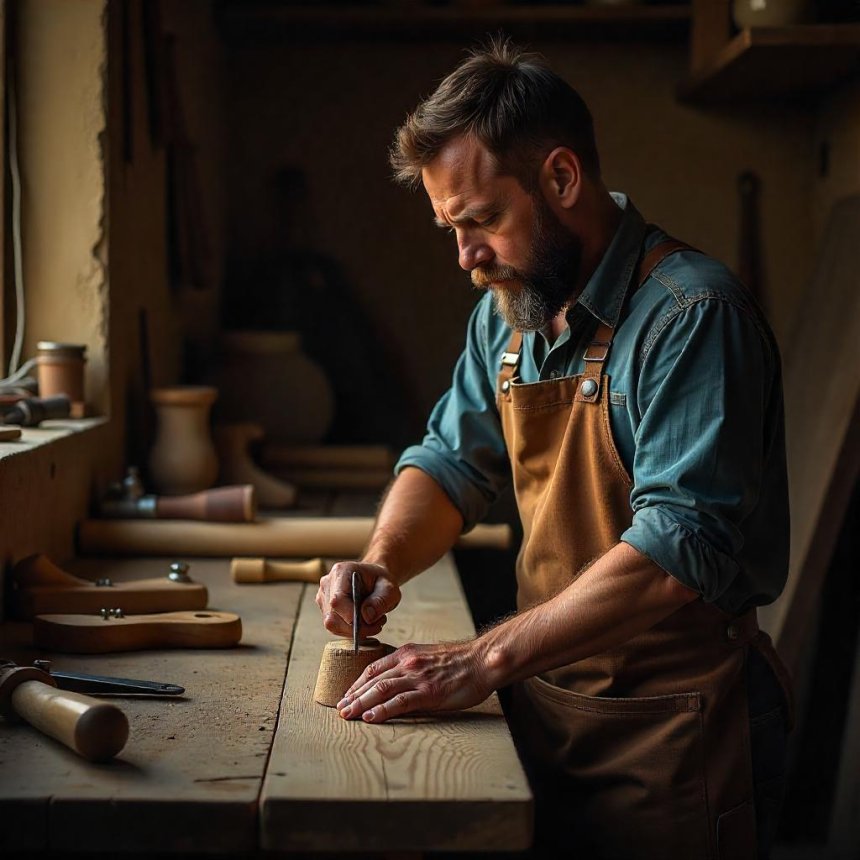Traditional Woodworking: Masculine Hobbies That Build Discipline
Discover how traditional woodworking cultivates discipline, patience, and craftsmanship. Explore the benefits of this masculine hobby, essential tools, beginner projects, and why it’s a timeless skill for men. Perfect for those seeking hands-on, rewarding hobbies.

In an age dominated by digital distractions and instant gratification, traditional woodworking stands as a timeless craft that fosters discipline, patience, and a deep sense of accomplishment. Unlike modern, machine-heavy woodworking, traditional methods rely on hand tools, requiring skill, focus, and perseverance—qualities that align perfectly with masculine virtues.
This guide explores why woodworking is more than just a hobby; it’s a discipline that shapes character, enhances problem-solving skills, and provides tangible rewards. Whether you're a beginner or an experienced craftsman, this deep dive into traditional woodworking will inspire you to pick up a chisel and plane.
Why Traditional Woodworking is a Masculine Craft
Woodworking has historically been a male-dominated craft, not by exclusion but by necessity. The physical and mental demands of shaping raw timber into functional art require strength, precision, and resilience—traits often associated with masculinity.
1. Builds Patience and Discipline
Unlike power tools that deliver instant results, hand tool woodworking forces you to slow down. Each cut, joint, and finish requires deliberate effort, teaching patience and attention to detail.
2. Enhances Problem-Solving Skills
Woodworking is a puzzle—measuring twice, cutting once, and adapting when mistakes happen. This iterative process sharpens critical thinking and adaptability.
3. Provides Tangible Results
In a world of intangible digital work, woodworking offers physical creations—furniture, carvings, tools—that stand as testaments to effort and skill.
4. Encourages Self-Reliance
Knowing how to build and repair things fosters independence, a core masculine trait.
Essential Tools for Traditional Woodworking
Starting with hand tools keeps costs low and skill development high. Here’s a beginner’s toolkit:
1. Hand Saw – For precise cuts.
2. Chisels – For carving and joinery.
3. Plane – For smoothing surfaces.
4. Mallet – For driving chisels without damage.
5. Marking Gauge – For accurate measurements.
6. Sharpening Stones – Keeping tools razor-sharp is crucial.
Beginner-Friendly Woodworking Projects
1. Simple Wooden Shelf – Teaches measuring and basic joinery.
2. Cutting Board – Introduces planing and sanding.
3. Stool or Bench – Develops structural understanding.
4. Wooden Box – Perfect for practicing dovetail joints.
The Mental and Emotional Benefits of Woodworking
- Stress Relief – The rhythmic motion of sawing and planing is meditative.
- Boosts Confidence – Completing a project provides a sense of achievement.
- Encourages Mindfulness – Focused work keeps the mind present.
Conclusion
Traditional woodworking is more than a hobby—it’s a discipline that builds character, patience, and practical skills. In a fast-paced world, it offers a return to craftsmanship, self-reliance, and tangible rewards. Whether you’re looking for a new passion or a way to disconnect from screens, woodworking is a masculine pursuit worth mastering.
Start small, stay consistent, and let the sawdust fly.
Share
What's Your Reaction?
 Like
0
Like
0
 Dislike
0
Dislike
0
 Love
0
Love
0
 Funny
0
Funny
0
 Angry
0
Angry
0
 Sad
0
Sad
0
 Wow
0
Wow
0














